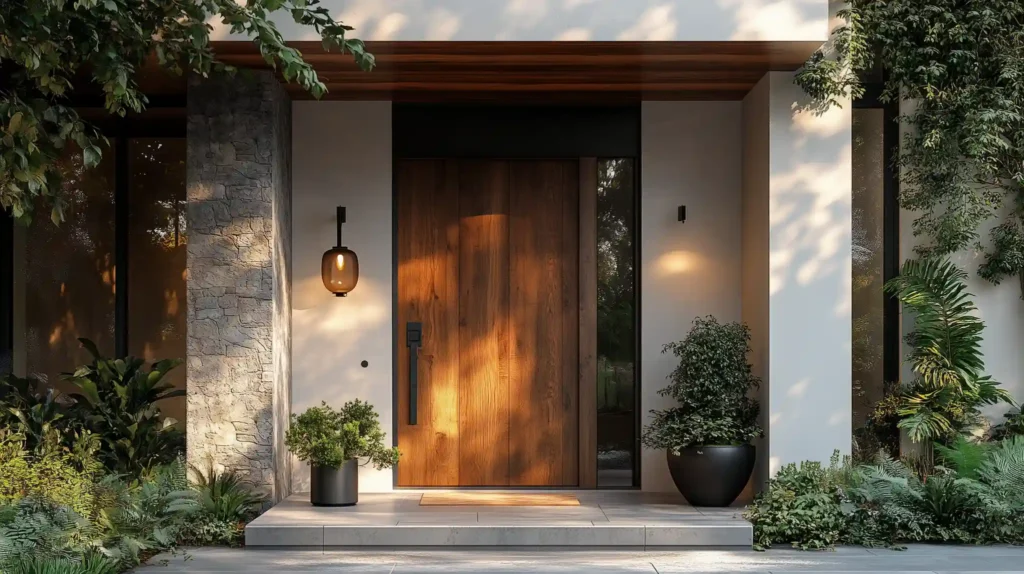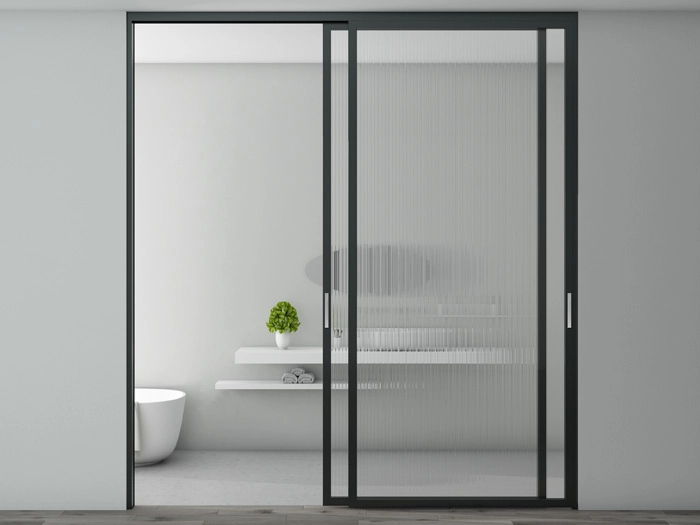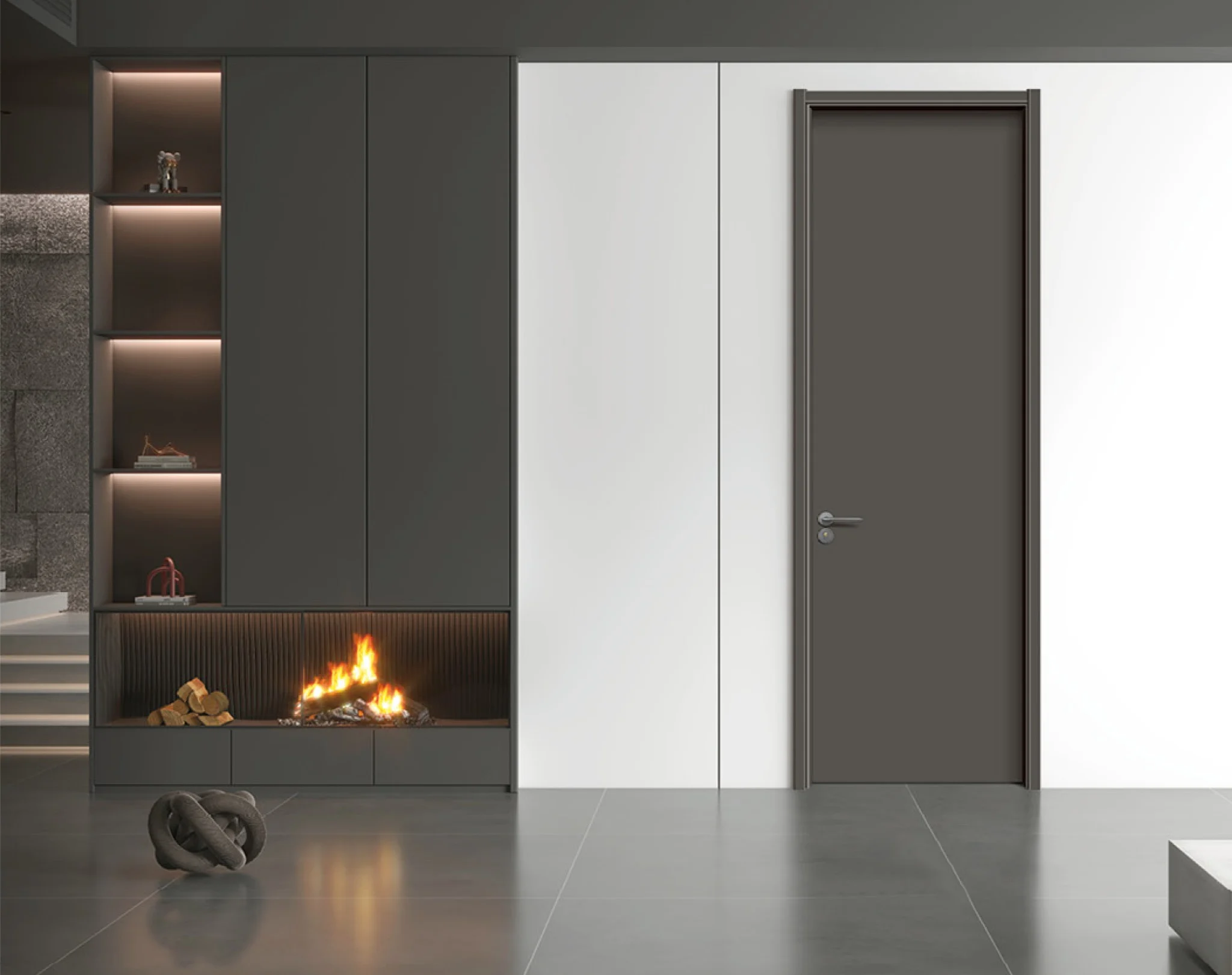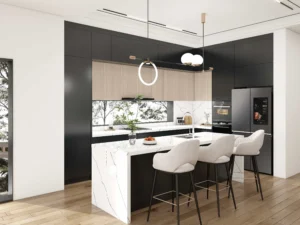Choosing between an aluminum door and a wooden door isn’t just about looks—it’s about lifestyle, comfort, and value. Doors define your home’s first impression, but they also influence insulation, maintenance, and long-term cost. Many homeowners today want something stylish, durable, and energy-efficient, yet they struggle to balance tradition and technology. So, which one wins? Let’s break it down.


What Are the Differences Between Aluminum Doors and Wooden Doors?
Manufacturing Process and Material Composition
Aluminum doors are built from extruded aluminum profiles, which are lightweight yet strong. Most are treated with powder coating or anodizing to resist corrosion and fading. Some modern systems include thermal breaks, which add insulation between inner and outer frames.
Wooden doors, on the other hand, are made from solid hardwoods like oak or engineered materials such as MDF or plywood. They can be veneered or painted in countless finishes. Wood brings a natural texture and a sense of warmth that no metal can replicate, but it requires sealing or varnishing to resist humidity and insects.
Both materials now benefit from modern production lines. Many manufacturers even offer hybrid models that combine an aluminum frame with a wooden surface—achieving both strength and beauty.
| Feature | Aluminum Door | Wooden Door |
|---|---|---|
| Main Material | Extruded aluminum alloy | Solid wood or engineered wood |
| Surface Treatment | Powder coating, anodizing | Painting, varnish, or veneer |
| Insulation Layer | Thermal break system (optional) | Natural insulating fibers |
| Production Consistency | Machine-extruded, uniform quality | Natural variation in grain and texture |
| Hybrid Options | Aluminum + wood composite available | Rarely combined with metals |
Durability and Lifespan Comparison
When it comes to durability, aluminum doors are built to last. They resist warping, swelling, cracking, and rusting, even in coastal or desert environments. According to Reynaers Aluminium (2024), a well-constructed aluminum door can last over 40 years with minimal maintenance.
Wooden doors offer natural sturdiness but are more sensitive to weather. In humid climates, wood can expand or warp, and in dry conditions, it may shrink or crack. However, premium hardwoods such as teak or mahogany can endure for decades if properly maintained.
In short, aluminum excels in longevity and stability, while wood provides timeless charm and authenticity—but with a little more care required.
| Feature | Aluminum Door | Wooden Door |
|---|---|---|
| Average Lifespan | 35–50 years | 20–30 years (with maintenance) |
| Weather Resistance | Excellent (no warping or swelling) | Moderate; sensitive to humidity |
| Pest Resistance | Termite-proof | Requires anti-termite treatment |
| Corrosion | Non-corrosive | Not applicable |
| Structural Strength | High, suitable for large openings | Varies by species and humidity |
Maintenance and Care Requirements
Aluminum doors are almost maintenance-free. Cleaning them with mild soap and water once a month keeps them looking new. The finish doesn’t peel or rust, and repainting is rarely needed.
Wooden doors require a more hands-on approach. They may need sanding, re-staining, or sealing every few years, depending on exposure to sunlight and moisture. Without regular upkeep, the surface can fade, crack, or attract pests.
For homeowners who value convenience, aluminum clearly wins. But for those who enjoy craftsmanship and the tactile feel of natural materials, wood’s maintenance can be part of the home’s personality.
| Feature | Aluminum Door | Wooden Door |
|---|---|---|
| Maintenance Frequency | Minimal (clean 1–2 times yearly) | Regular (refinish every 2–3 years) |
| Cleaning Process | Wipe with mild detergent | Sanding and resealing required |
| Paint/Fade Resistance | Excellent | Moderate |
| Moisture Protection | Inherent from coating | Requires varnish or sealant |
| Long-Term Upkeep Cost | Low | High |
Energy Efficiency and Thermal Performance
Wood is naturally insulating due to its dense cellular structure. It traps air within its fibers, helping maintain indoor temperature and reduce energy costs.
Aluminum, however, is a heat conductor—but with the use of thermal breaks, modern systems have improved dramatically. According to ENERGY STAR (2024), certified aluminum doors with thermal breaks can match or even surpass wooden doors in energy performance.
For homes in extreme climates, aluminum frames with insulated glass and gaskets provide consistent comfort and structural stability. Wood remains the better insulator for smaller, traditional doors—but aluminum offers superior energy control for large openings or sliding systems.
| Feature | Aluminum Door | Wooden Door |
|---|---|---|
| Thermal Conductivity | High (without thermal break) | Low (natural insulator) |
| With Thermal Break | Excellent insulation | Not required |
| Sound Insulation | Good (with proper seals) | Excellent |
| Air Tightness | High (precision frame fit) | Moderate |
| Energy Efficiency Rating | ENERGY STAR/NFRC certified options | Naturally efficient |
Aesthetic Appeal and Design Flexibility
Wooden doors carry unmatched warmth and character. Each grain pattern is unique, giving interiors a sense of nature and craftsmanship. They’re perfect for classic, rustic, or minimalist homes that embrace organic textures.
Aluminum doors, by contrast, deliver sleek lines and modern appeal. Their slim profiles allow for larger glass panels, making spaces feel brighter and more open. Powder coating offers hundreds of color options, from matte black to metallic bronze.
Architects and designers often use aluminum doors for contemporary spaces, while wood remains the preferred choice for timeless elegance. Some modern homeowners even mix both—wood inside, aluminum outside—for the best of both worlds.
| Feature | Aluminum Door | Wooden Door |
|---|---|---|
| Design Style | Modern, minimalist | Traditional, classic |
| Color Options | Over 200 powder-coated finishes | Natural tones or paint finishes |
| Surface Texture | Smooth, metallic | Natural grain, warm feel |
| Customization | Flexible (glass, pivot, folding) | Custom carvings, details possible |
| Architectural Fit | Ideal for modern & commercial spaces | Best for residential & classic interiors |
How Do Aluminum and Wooden Doors Differ in Cost Over Time?
At first glance, wooden doors often cost less upfront—especially softwoods like pine. But long-term, aluminum can be more economical. Here’s why:
Maintenance costs: Aluminum requires none; wood needs periodic refinishing.
Durability: Aluminum can last 40–50 years; wood may need replacement after 20–30 if not maintained.
Energy savings: Modern aluminum systems with thermal breaks lower heating and cooling bills.
According to HomeAdvisor (2025), a quality aluminum front door costs between $800–$2,500, while a solid wood door ranges from $600–$2,000—but maintenance can double the wood’s lifetime expense.
Which Door Is More Sustainable and Eco-Friendly?
Both materials have green stories—depending on sourcing. Aluminum is 100% recyclable, and most global supply now comes from recycled scrap, reducing carbon emissions by up to 95% (World Aluminium Association, 2024).
Wood, if responsibly harvested from FSC-certified forests, is renewable and biodegradable. However, untreated timber can deteriorate faster, leading to more frequent replacements.
If sustainability matters most, look for aluminum doors made from recycled materials or wooden doors certified by the Forest Stewardship Council (FSC).


How to Choose Between Aluminum and Wooden Doors for Your Next Project?
How to Choose Between Aluminum and Wooden Doors for Your Next Project?
| Factor | Aluminum Door | Wooden Door |
|---|---|---|
| Durability | High | Moderate |
| Maintenance | Low | High |
| Insulation | Medium (with thermal break) | High |
| Style | Modern | Classic |
| Cost (Lifetime) | Lower | Higher |
| Sustainability | Recyclable | Renewable (FSC) |
| Ideal For | Coastal, urban homes | Warm, traditional interiors |
Final Thoughts
There’s no universal winner—just the right match for your needs. Aluminum doors excel in durability, low maintenance, and sleek aesthetics, while wooden doors charm with warmth and character. Your choice depends on where you live, your budget, and the mood you want your home to express.
If you’re building or renovating, consult a professional manufacturer who can provide both materials with certified performance standards. A custom solution ensures your door not only looks stunning but also performs beautifully for decades.
FAQs grey kitchen cabinets
Are aluminum doors better than wooden doors?
Aluminum doors are more durable, weather-resistant, and low-maintenance compared to wooden doors. However, wooden doors offer a warmer aesthetic and better natural insulation, making the choice depend on your design preference and climate.
Which type of door lasts longer, aluminum or wood?
Aluminum doors typically last 35–50 years with minimal care, while wooden doors last around 20–30 years if properly maintained. Aluminum is ideal for humid or coastal regions, whereas wood suits dry or moderate climates.
Are aluminum doors energy efficient?
Yes, modern aluminum doors with thermal breaks provide excellent insulation and can meet ENERGY STAR standards. While wood naturally insulates better, aluminum doors perform efficiently when paired with insulated glass and weather seals.





